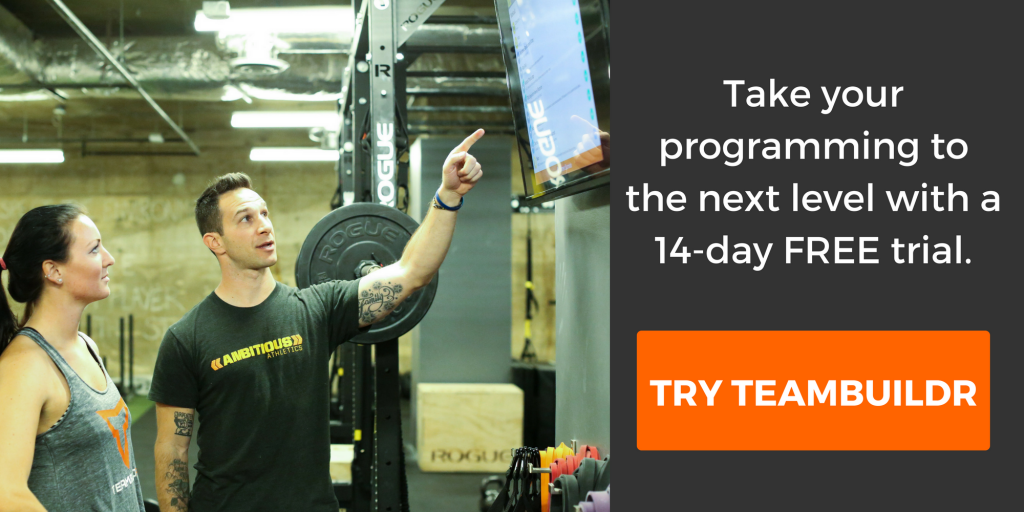How to Optimize Rest Between Weight Lifting Sets
Weightlifting movements (WLM) are ballistic exercises that utilize the entire body. Due to the explosive nature and musculature involved, these movements can be very taxing and require extended rest periods between sets1. Athletes need 4 to 5 minute rest periods between large, taxing movements2.
While rest between sets is crucial for an athlete, both in terms of performance and recovery, the fact of the matter is it eats up precious weight room time that coaches may not have. It’s a tricky situation—if a coach only has an hour to train his or her team, 5 minute rest periods between each set can keep you (and your team) from hitting your training goals. But, at the same time, training goals may be missed if an athlete doesn’t have enough recovery time.
"Filler" Exercises: Why You Need Them
The best solution to maximize weight room and recovery time is to program “filler exercises” between sets. These filler exercises are usually low intensity and target a problem area with focused mobility and/or stability movements. These exercises are a great compliment to the larger, more taxing WLMs. They don’t have to be revolutionary movements that you can throw your name on and go on a speaking tour about. Something as simple as an activation exercise in opposition of a large movement pattern can have a big pay off in the long run.
Programming Filler Exercises
Following a set of heavy WLM, the athlete will have 4 to 5 minutes of rest before they will attempt to replicate the effort again. During this time I program a static stretch and low-intensity core exercise or glute activation exercise. My go to static stretch is the couch stretch (Image 1).
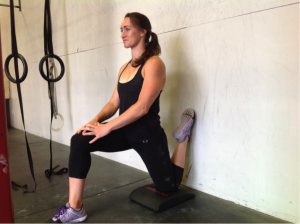
Our athletes spend countless hours a day sitting and, generally, are tight in their hip flexors and weak in their glutes. This is known as lower crossed syndrome3. My general recommendation is for the athlete to perform the stretch for 30 seconds per side. Immediately following the stretch the athlete will perform some number of single leg glute bridges (Image 2).
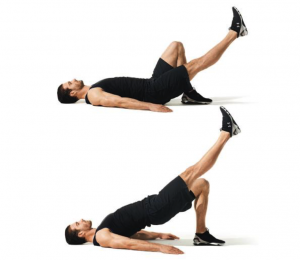
My standard recommendation is 5 reps per side with a 3 sec pause at the top. This exercise sequence may only take 90 seconds to 2 minutes. If during these 2 minutes the athlete feels ready to execute the next set, I let them.
If they aren’t feeling recovered after the sequence of exercises I’ll add a round of 90/90 diaphragmatic breathing. Here’s a video of the 90/90 breathing drill. When I have my athletes do a 90/90 drill, I have them inhale for 5 seconds and exhale for 5 seconds — 6 full breaths adds up to another minute of rest. The focus on long slow breaths can aid in lowering the heart rate of the athlete and in turn bring their nervous system down from a very highly sympathetic state to a more parasympathetic one, thus preparing them for the next set.
This brings the length of the rest period to 3 minutes. If the athlete is still not feeling ready to execute the next set I just add a walk to the drinking fountain and back. By this point, the 4-minute mark should be reached and the athlete will move into the next set.
By adding these active recovery exercises between sets, not only will the athlete reach optimal recovery between sets, but we have now attacked a problem area on the athlete. Now at the end of the session, you may not need to spend as much time on flexibility training following a session or in a completely separate session.
Resources
1 Kraemer, W. J., & Ratamess, N. A. (2004). Fundamentals of resistance training: progression and exercise prescription. Medicine and science in sports and exercise, 36(4), 674-688.
2 Zatsiorsky, V. M., & Kraemer, W. J. (2006). Science and practice of strength training. Human Kinetics.
3 Janda, V., Frank, C., & Liebenson, C. (1996). Evaluation of muscular imbalance. Rehabilitation of the spine: a practitioner's manual, 6, 97-112.
Subscribe to our blog
Subscribe to receive the latest blog posts to your inbox every week.
Related posts
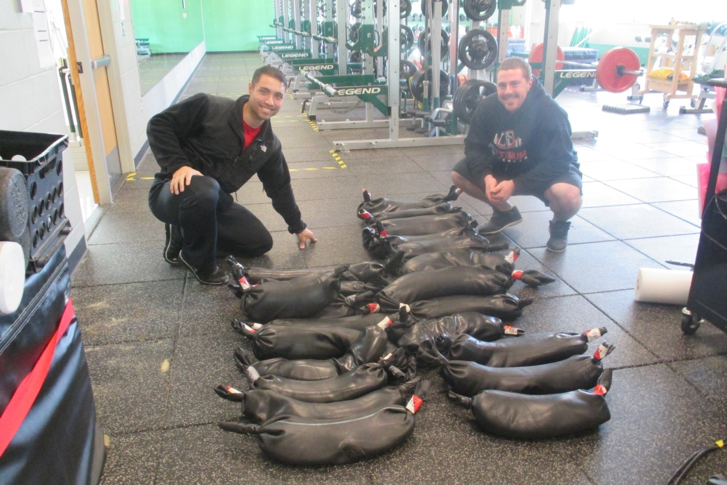
5 Best Practices When Choosing Equipment for Weight Rooms
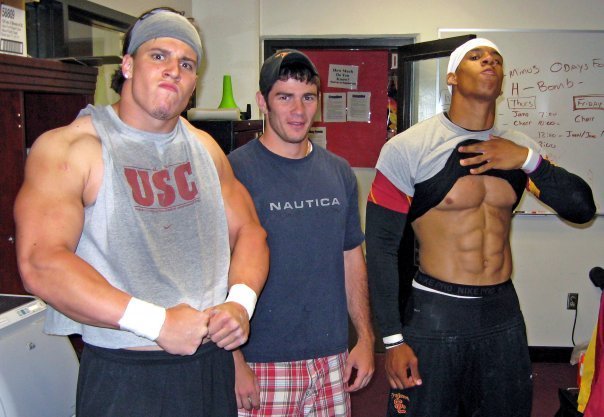
Why Your Leaders On-The-Field Also Need to Be Leaders in the Weight Room

